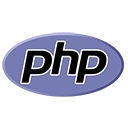A Content Management System (CMS) allows you to manage and update the content of your website without the need for extensive coding. In this guide, we will create a basic PHP CMS to add, edit, and delete articles on a website.
Database Setup
To store articles, we need a database. You can use MySQL, PostgreSQL, or any other database system. Here's how to set up a MySQL database:
CREATE DATABASE cms_db;
USE cms_db;
CREATE TABLE articles (
id INT AUTO_INCREMENT PRIMARY KEY,
title VARCHAR(255) NOT NULL,
content TEXT NOT NULL,
created_at TIMESTAMP DEFAULT CURRENT_TIMESTAMP
);
Creating the CMS
We'll create a simple CMS with the following features:
- Add an article
- Edit an article
- Delete an article
- List all articles
Folder Structure
Organize your project with a basic folder structure:
- cms/
- index.php (Home page)
- add.php (Add an article)
- edit.php (Edit an article)
- delete.php (Delete an article)
- includes/
- db.php (Database connection)
- functions.php (CRUD functions)
Code Implementation
Create PHP scripts for each functionality. You can use HTML forms for input and display data from the database.
Security Considerations
Basic security practices include:
- Input validation to prevent SQL injection
- Escape output data to prevent XSS attacks
- Use prepared statements for database queries
Conclusion
You have created a basic PHP CMS to manage articles on your website. As your project evolves, consider adding user authentication, better organization, and additional features to enhance your CMS.

